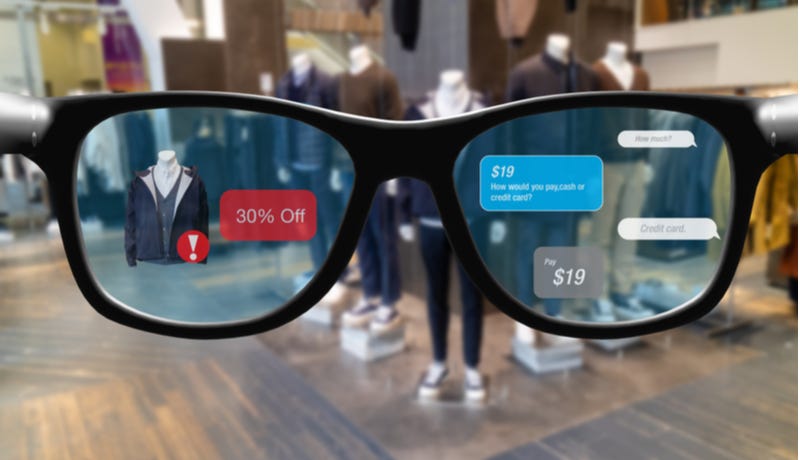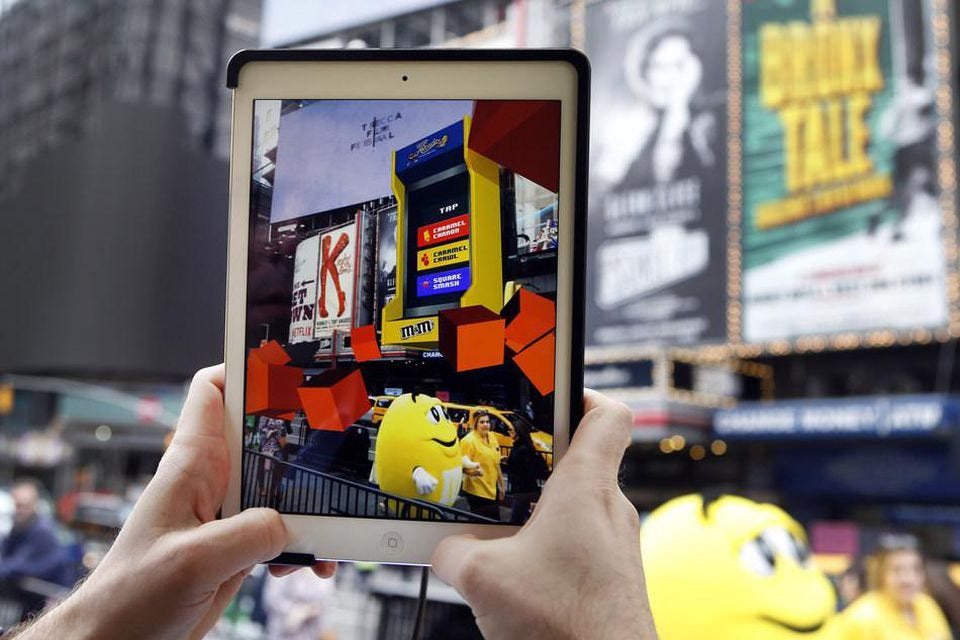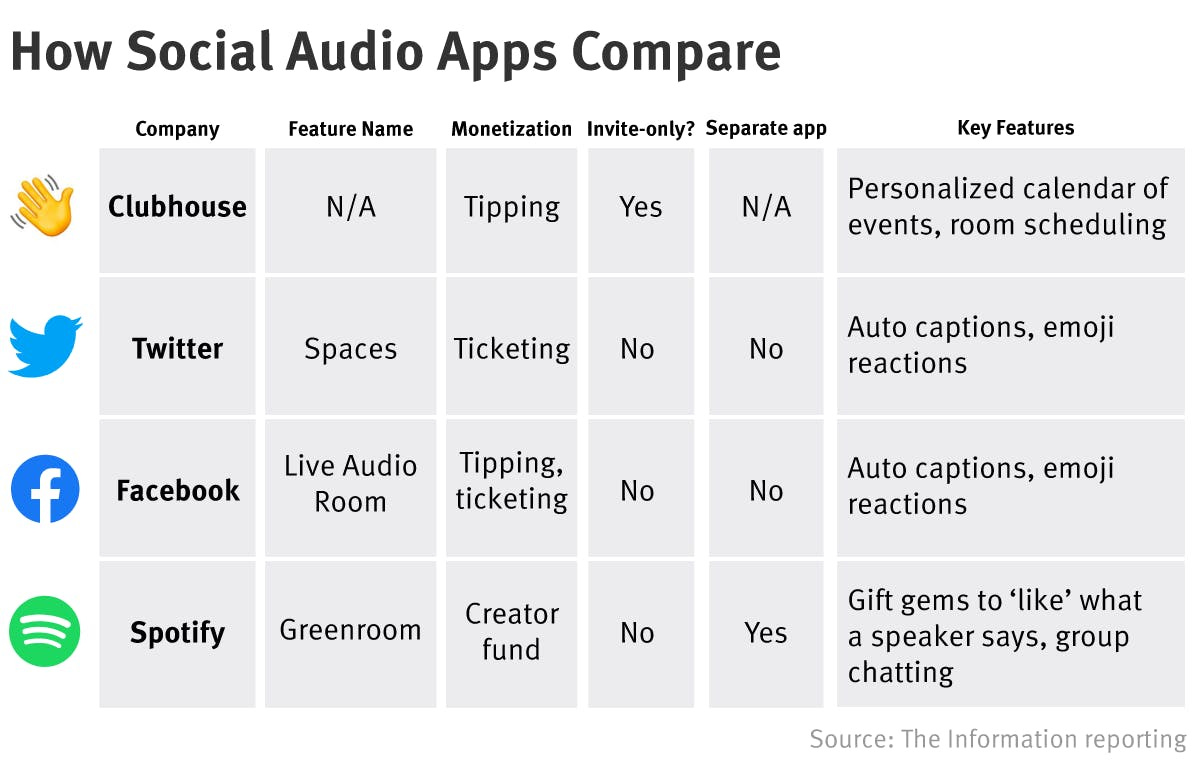Facebook is starting to test how advertising will work in virtual reality. This is an important social signal because we know ads are coming to mixed reality (XR) experiences in the long run, but we don’t yet know how those will work, what consumers will tolerate, and how it will drive substantive ROI for brands.

We’re growing accustomed to AR ads powered by our phones, apps, and platforms (e.g., Facebook Camera Effects, Snapchat filters, interactive billboards, and packaging that comes to life), but we haven’t really seen advertising products or testing at any significant scale in VR. The news of note last week was that Facebook would be testing ads inside Oculus Quest experiences, starting with a single gaming shooter title: Blaston from Resolution Games.
It’s early days, folks. So it’s not surprising there was a lot of pushback, especially for a $10 paid game. And as a result of the consumer pushback, Resolution Games has now announced the VR ads test will be in a free game instead, Bait! VR. Putting ads in a free game actually makes more intuitive sense for where ads may appear in VR in the future — just like today’s social platforms and freemium mobile games where the service is free in exchange for viewing ads.
I actually love playing Bait, and so do my kids. And you can see where a sponsored item or “watch ad to unlock” experience, gear, or fish would be additive to gameplay. Brand integration is a key part of modern gaming (think of brand integrations in Madden, FIFA, Fortnite, etc.), so it’s intuitive that brands could engage this way in VR. I think this would be way more acceptable to VR users than programmatic ads, at first.

But again, it’s early days. And these kinds of start/stop/pivots are going to be necessary as the world’s biggest XR platforms figure out how to monetize the coming age of digital content in a physical world. And highly-targeted, programmatic branded content (I tried not to say ‘ads’ again), is certainly on its way into these experiences. Thankfully the big players are learning from previous missteps around consumer education, privacy, and working ahead of international legislation…
Facebook likely realizes that there are going to be plenty of privacy questions and addressed some of them head-on. The biggest admission is that Facebook says it will not be using any data stored locally on the Oculus headset, including images from the device’s cameras to target ads. It also says, somewhat less emphatically, that there are “no plans to use movement data to target ads.” … Facebook specifically notes it doesn’t use audio conversations on the headset for ad targeting. – TechCrunch, 6/2021
Although Facebook has a patent for an AR hat that may or may not hit the market in the coming years, smart glasses are coming. Whether it’s Apple, Facebook, Microsoft, Snap, or all of the above, by 2030 there will be smart XR-enabled glasses to contend with in our daily lives. Even with a dip from the pandemic, the global smart glasses market is expected to take off by 2030, with forecasts estimating the market will be worth $2.3 billion.

Beyond the tech for your face, the rapid adoption of RFID, Bluetooth, QR codes, object recognition A.I., location data, and Apple AirTags means that the real world is increasingly pre-labeled and identifiable for these XR devices. And that’s a place we marketers can start planning around, too.
Facebook alone has 10,000 people working across both VR and AR. The company is “investing billions and billions and billions of dollars to build something that we think will contribute to a compelling future five to 10 years from now,” Mark Zuckerberg said at the VivaTech conference last week. Facebook has been acquiring talent and technology in this space at an alarming rate. So they are certainly the one to watch as we think about ads coming into VR and learning what we know about ads in AR through our phones.
“Facebook is going to probably have a near-monopoly in VR software before it even matters… Facebook will have literally reinvented itself for a new paradigm shift in computing by the time regulation gets around to addressing it in its current state.” – Platformer

Will ads in our smart glasses make our reality look like Keiichi Matsuda’s Hyper-Reality short film? Maybe in 20 years. But probably not. Ideally, these ads are NOT just a reinterpretation of the banner ad (which is 27 years old now, btw) or disruptive pop-ups, and instead, they become a true reinterpretation of what targeted, experiential marketing can be at its very best. And that will require testing, starts, and stops.https://www.youtube-nocookie.com/embed/YJg02ivYzSs?start=52&rel=0&autoplay=0&showinfo=0&enablejsapi=0
Do we want ads in these VR and AR platforms and experiences? That’s the wrong question to ask. How will ads show up in XR to offer increased value, entertainment, and utility? That’s the right place to focus. Where there are eyeballs, there will be ads.
And it’s a modern marketer’s job to anticipate trends and then help dream, test, iterate, and direct how our brands will affect these future mediums. That’s what it’s all about. -Greg

Here’s are the other social signals I’m tracking this week…

Hear This – Social Audio Hits Mainstream: Facebook Audio Rooms are now live for selected public figures, users, and Facebook Groups. Twitter Spaces is now expanded to all users. Clubhouse is now on Android. Spotify launched its live audio app, Spotify Greenroom. The Information has a great chart here (via “The Week Social Audio Went Mainstream”) that breaks down the differences and similarities.

Cashierless Tech is Coming to Grocery Stores: If you haven’t yet shopped at an Amazon Go convenience store (Chicago, NY, San Fran, Seattle) featuring “Just Walk Out Technology,” you have to. It’s a bucket-list experience grabbing some snacks and walking out of the store, finding your Amazon account perfectly deducted for anything you picked up. And now the technology is being tested at a full-size Amazon Fresh grocery store in Seattle, using “a series of overhead cameras and pressure sensitive shelves to automatically detect what shoppers put in their carts.” Learn more here.

The Rise of the Social Media Sports Star: As TV audiences fragment across channels, platforms, and watching occasions, live sports still reign supreme as collective tune-in moments. But on social media, niche sports like disc golf, bowling, and archery are growing in popularity thanks to widespread sharing of pivotal moments on TikTok and Instagram. These athletes work hard not to become “one clip wonders” and are even netting significant sponsorship dollars.
Key quote: “Until television rights deals increase enough to start funding substantial salaries in niche sports, social media is the best way for these athletes to earn a living. Life-changing money is out there, but they do have to earn it.”
Quick Hits:
- Twitter is opening applications for Super Follows and Ticketed Spaces.
- Tim Berners-Lee, the inventor of the world wide web, is defending selling an NFT of it.
- Tweet of the Week: @Twitter says, “pls stop posting screenshots of Tweets on IG Stories. you can now share Tweets directly on iOS.”
- Consumers say QR codes are here to stay, with nearly 6 in 10 (59%) of new respondents saying QR codes will be a permanent part of using their phone in the future.
- TikTok will let creators add mini-apps to videos, called Jumps.
- Facebook will test “visual search” to find similar products to purchase on Instagram.
- Virtual shops are coming to WhatsApp and Facebook Marketplace.
- Windows 11 was announced and will be coming by EOY.
- An online petition urging Jeff Bezos to buy and eat the Mona Lisa has almost 15,000 signatures.
- App of the Week: Honk is a new social network featuring real-time chat with disappearing messages. Join Honk here.
- Reddit of the Week: Britney Spears’ “…Baby One More Time” was released in 1998. It is now as old as Eagles’ Hotel California, KISS’ Destroyer, Ramones’ Ramones and Rush’s 2112 were at the time of its release.
- Twitter Account of the Week: @petfindernames, animals from the internet that have unconventional names.
- Chrome Extension of the Week: Tired of the Cannes-gradulatory Cannes-versation? This word replacement extension for Google Chrome can help. Install to replace regurgitated words and hashtags related to Cannes Lions with much, much more interesting words and hashtags (NSFW).
- Viral Video of the Week: YouTube’s Jazz Emu produced the most SFW love letter to MSN Messenger ever.
- LOL of the Week: Comedian Leslie Jones is doing hilarious real-time reactions to the Olympic Trials on her Instagram and Twitter accounts (NSFW).
See you on the internet!
Greg
